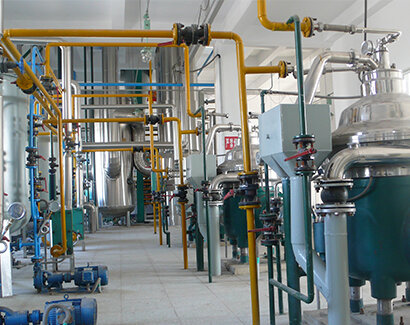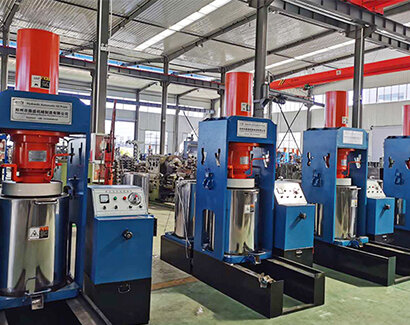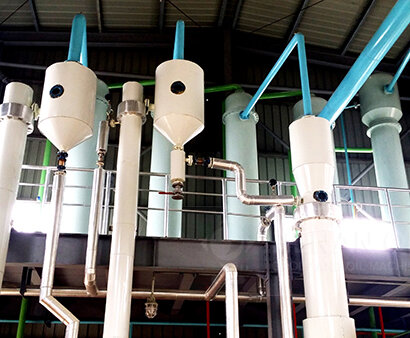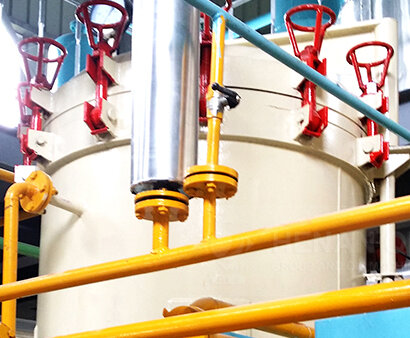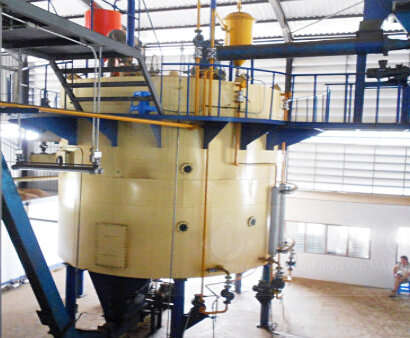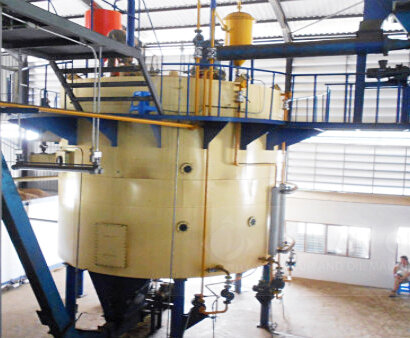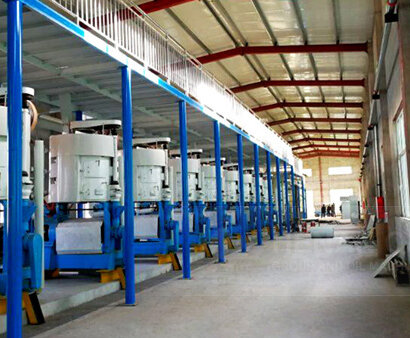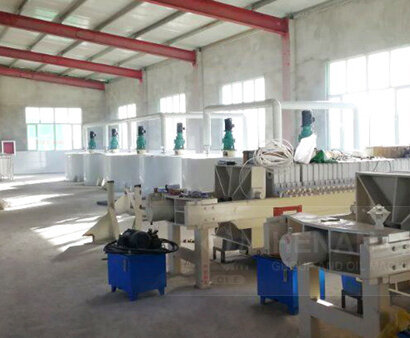Solutions For Rice Bran Oil Processing
1.Rice bran pretreatment process:The rice bran pre-treatment process includes bran and thresher rice separation, tempering, puffing, drying and other process.
Firstly, the rice bran is separated from the threshing rice to remove the impurities such as broken rice and coarse bran shells in the rice bran, after cleaning it up, the rice bran is sent into the tempering pot to adjust the temperature and moisture to a condition suitable for puffing.
The effect of puffing is to destroy the cellular organization of the rice bran and change the internal voidiness of the rice bran, while simultaneously boosting the permeability of the rice bran and improving the leaching efficiency. After puffing process, the rice bran enters the flatbed drying equipment for drying and cooling.
The pre-treated rice bran can be sent directly into the leaching plant for processing, or it can be stored first (for approximately one week).
2.Rice bran oil cake solvent extraction process:
The rice bran oil leaching workshop consists of solvent leaching system, wet meal desolvation system, mixed oil evaporated stripping system and solvent recovery system.
The conveying equipment transfers the puffed rice bran particles to a solvent extractor. Depending on the organic solvent extraction principle, through the spraying and soaking way to ensure good contact between the rice bran cake and solvent, the resulting mixed oil will be extracted and then forwards the evaporation and stripping system to vaporize the solvent and separate it from the oil to obtain crude rice bran oil.
Dingsheng Machine design negative pressure evaporation technology, innovative technologies are dedicated to saving energy and reusing materials, ensuring excellent quality of rice bran oil, helping to improve energy efficiency and heat recovery, and reducing steam consumption.
3.Rice bran crude oil refining process:
The rice bran oil produced by leaching method will contain various impurities, such as cake meal powder, plant fibre, phospholipids, free fatty acids, pigments, water, solvents, etc. These impurities cause the oil to be highly susceptible to rancidity, and some of the oil will contain harmful elements and heavy metals, which will cause harm to human body after consumption.
Therefore, the crude oil must be refined by physical or chemical refining to remove impurities, solvents and harmful elements. Rice bran oil refining workshop has six main processes, water degumming process, physical deacidification and deodorization process, continuous dehydration process, bleaching and filtration process, crystallization and dewaxing process, finally, the most impurities and harmful substances are removed from the oil.
The continuous refining system is an innovative combination of different technologies that are designed to work in harmony with the rest of the production line and help improve the overall refining efficiency, ensure the quality and food safety of rice bran oil, and also prolong the storage time.
4.Rice bran protein process:
In particular, rice bran has a not-negligible amount of lipids and nutrients, where the protein content in defatted rice bran can be as high as 18%. However, the first fate of rice bran is the feed formulation industry, losing the opportunity for the recovery of its potential. It is of great practical significance to recovery new protein resources from rice bran and improve the value of rice bran.
Dingsheng Machine has developed the rice bran protein extraction process since the earliest days of the industry, from rice bran separation, granulation and drying process, through solvent leaching, low temperature precipitation, protein separation, acid precipitation, curdling and so on, to effectively extract the rice bran protein to meet the dietary needs.


